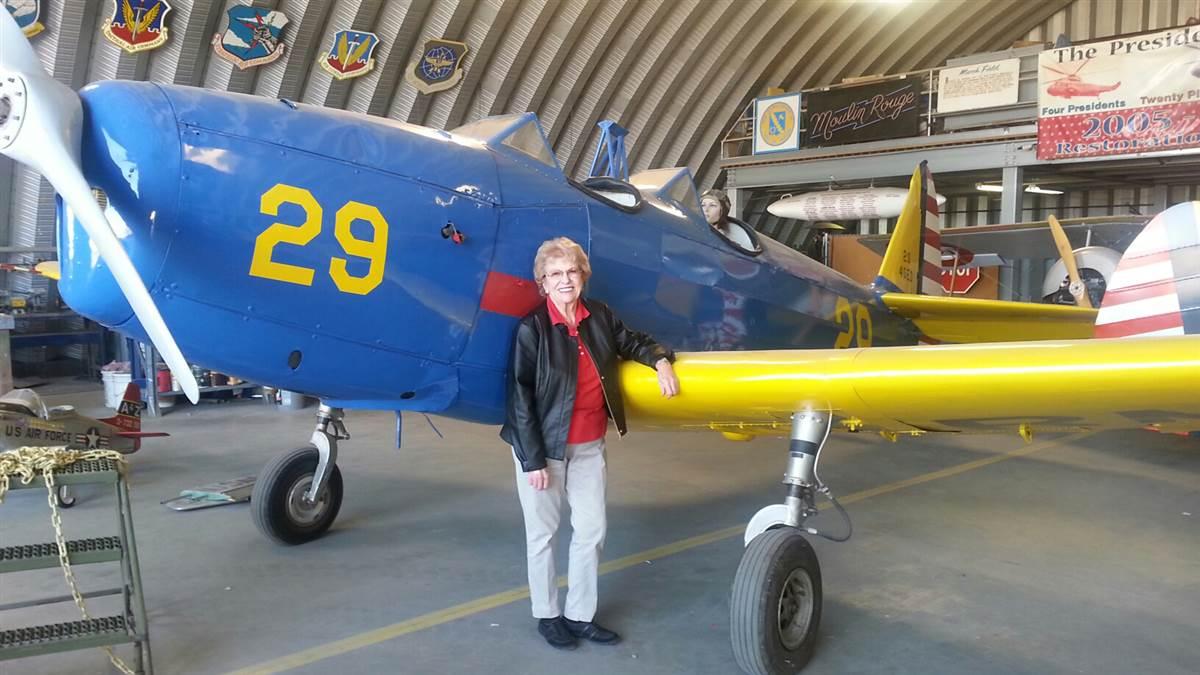AOPA 172 Sweepstakes: Inside and out
New interior and paint are finishing touches

Climbing back into the airplane, I put my hand against the pilot’s door for leverage. Some of the sidewall crumbled onto the ground. That’ll happen to an airplane when it has been sitting for a few years—or 15.
At Yingling Aviation, all that original upholstery and flooring was removed, along with the seats and soundproofing. When I picked up the airplane at Yingling’s Wichita headquarters to take it to EAA AirVenture, bare metal edges had been carefully taped over to protect pilot and passenger. Mismatched seats were in place up front; in the back was more exposed metal and cables.
“I hope you brought noise-canceling headsets,” a Yingling representative told me. “It’s kind of loud.”
In short, it wasn’t going to win any beauty contests at AirVenture, but we knew the result would be worth the bemused comments. (Apparently, many pilots have owned cars that resembled our Sweepstakes 172.)
After AirVenture, the airplane went to Cimmaron Aircraft Corp., El Reno, Oklahoma, for its base coat of paint. Then, the airplane was flown to Wichita so that the final phase of the restoration could begin.
VASI Aerospace of Wichita supplied the Sweepstakes 172’s new flooring. VASI’s product line includes flooring, carpet, synthetic coverings, fabrics, and custom cup holder inserts. Kevin Stultz, co-owner and president, flies a Cessna 182.
Yingling’s upholstery department produced the interior. Technicians hand-cut and stitch the materials with the same care they use to craft custom interiors for Cessna Caravans. The Ultraleather interior looks like leather but is more durable and easier to clean.
If you were one of the folks who scratched your head at the Sweepstakes 172’s AirVenture appearance, I hope you’ll get a chance to see the final product this year.
Email [email protected]

YOU CAN FLY
The thrill is back
Returning to the left seat
By Jill W. Tallman
Mary Flake is, at this writing, laid up with a broken knee. She can’t wait to get her surgery and recuperation out of the way, because Flake wants—no, needs—to get back in the air.
Flake, 84, recently returned to the left seat, renewing a love affair with aviation that began when she was 15 years old.
Flake earned a pilot certificate in 1949 and attended aeronautical classes at San Bernadino Valley College. “When we wrote to the airlines to enter their flight schools, all the boys were encouraged but they were not accepting women into their flying program. That’s the way it was in those days and I accepted it,” she said.
Flake married “a fine young fireman” named David, and they raised two sons and a daughter as she earned a real estate broker’s license. In 1974 she bought a brand-new Piper Archer. She used it to travel for business and to earn an instrument rating.
In 1984 Flake sold her airplane so that she and her husband could retire to live on a sailboat. David died in 2002, and Mary remarried. She became a widow again in 2013.
Six months later Flake began volunteering at April Field Air Museum in Moreno Valley, California. The museum had a Fairchild PT–19 that had been a trainer in World War II. What’s more, Flake had flown it in 1949. Volunteering at the museum, Flake discovered “I was bit by that ole’ flying bug again.”
She found an instructor and started flying in a Cessna 172, but she missed her Piper. She found another CFI with a Cherokee. Even so, she estimated it took about 30 hours to get her landings to where she wanted them—although her flight instructor said they were fine. She renewed her third class medical certificate. Her aviation medical examiner said her health was so good he would have issued her a five-year certificate if he could have.
Flake bought another Archer, hoping that she could find some partners. A student pilot offered to buy in. Robert Gregory earned his pilot certificate in the airplane, which they keep at French Valley (F70) in Murrieta, California. He’s now hard at work on an instrument rating, and the two enjoy flying together, swapping legs as pilot in command.
Flake had already been signed off to fly as PIC, yet she attended a Rusty Pilots seminar at French Valley. She reads AOPA publications, watches webinars, and devours the weekly Pilot Workshops tips, which she shares with Gregory.
Rusty pilots need to be patient with their progress, “particularly if they’re up there in years,” Flake said. “I never once got impatient enough that I wanted to quit. I couldn’t figure out why I wasn’t feeling the airplane.”
It may take you a little longer than you anticipated to reacquire those skills, but you won’t mind once you’re back in the air. Just ask Mary Flake.
Email [email protected]



